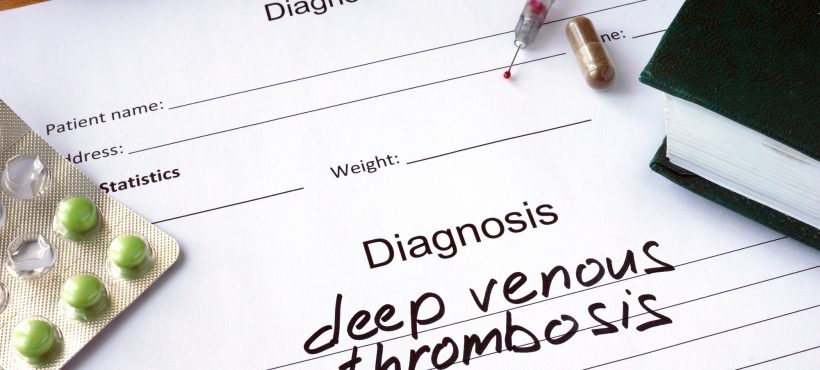1 in only 1,000 people experience venous thromboembolism at least once in their lifetime. So if you think you might have deep vein thrombosis (DVT), you aren’t alone.
Yet, learning about DVT, its causes, and its treatments can be a daunting task. That’s why we’re bringing you this guide to understanding DVT.
Ready to find out what your doctor can do to treat DVT and what you can do to prevent developing another blood clot in the future? Then keep reading for the answer to those questions and more.
What is Deep Vein Thrombosis?
Deep vein thrombosis is also known as a deep vein blood clot. These blood clots occur in so-called deep veins, which are veins found mostly in the extremities (i.e., legs, arms, feet, etc.). As compared to shallow veins, deep veins are further from the surface of the skin.
Here’s the thing about these veins: they carry the majority of the body’s blood. That means an issue with one deep vein can mean more widespread effects.
For instance, a blood clot in a deep vein isn’t a huge deal on its own. Yet, that’s only if you seek treatment as soon as you start to develop symptoms. Without seeking treatment, you run the risk of developing a pulmonary embolism (a blood clot in lung arteries).
However, DVT itself is not life-threatening. As long as you recognize the symptoms of DVT and seek treatment, you’ll be just fine.
The Causes of DVT
While the exact cause of DVT is currently under debate, physicians do recognize the risk factors of developing DVT.
You can reduce the risk for blood clotting in general and DVT in particular by minding your blood pressure. Eating a diet low in bad fats, exercising regularly, and maintaining a healthy weight go a long way in helping to prevent DVT. Smoking is another environmental risk factor for DVT, as is having surgery on the lower extremities.
You may experience none of the above risks but still, develop DVT. Why is this? Research shows that individuals who have a family history of deep vein thrombosis are at greater risk, meaning there’s a genetic component to the condition, too.
Symptoms of DVT
Though DVT most commonly occurs in the lower extremities, some people develop deep vein thrombosis in the arm. It’s not always easy to recognize the symptoms, especially since many people don’t experience any symptoms at all.
When you do experience DVT complications, you may see swelling in your arm or leg. Pain and tenderness while walking are another sign you might be dealing with a deep vein thrombosis. Red, hot, or painful areas may also signify DVT.
How is DVT Diagnosed?
If you think you might be dealing with DVT, your physician will want to diagnose you. You’ll be interviewed about your symptoms before having a physical exam. During the exam, you’ll want to point out any areas where you’ve noticed the symptoms of DVT.
For patients who do appear to be dealing with a deep vein blood clot, the physician will order tests. Depending on your symptoms, this test might include ultrasound, blood testing, venography, and CT or MRIs.
If one or more of these tests reveal a clot, your physician will recommend a treatment plan to prevent the clot from getting larger.
Treatments for DVT
DVT treatment plans typically have two goals:
- Prevent the clot from growing or splitting off to other parts of the body
- Reducing the risk of developing another clot in the future
To prevent the clot from getting bigger, your physician will likely recommend a blood thinner (an anticoagulant). Blood thinners can be taken orally or via injection. In addition to helping prevent the clot from growing, blood thinners also help reduce your risk for future DVTs.
In the rare instance that blood thinners don’t work, physicians have another trick up their sleeve. Thrombolytics (also known as clot killers or clot busters) are prescription medications that actually destroy the clot extremely fast. The drug is delivered via IV usually, which means you may have to undergo treatment in a hospital.
For those who can’t or don’t want to use medication, filters are the next best thing. A physician or surgeon will implant a semi-permeable filter between the thrombosis and the rest of your body. That way, the clot can’t break apart and affect other veins arteries.
Home Prevention
When you get your deep vein blood clot diagnosis, the good news is you can start preventing it from getting bigger or developing new ones at home. All it takes is a few lifestyle changes.
Experts suggest that a sedentary lifestyle may increase the risk of DVT. That’s why you should get up and moving as soon as you can after being diagnosed. You can also wear compression socks, which help lessen DVT-associated swelling and prevent new blood clots from forming.
With a doctor’s recommendation, you can even harness the DVT-fighting benefits of herbal remedies. Ginger, turmeric, cayenne pepper, and vitamin E each contain compounds that act as natural blood thinners. You can even get vitamin E from your diet in foods like olive oil, mangoes, and almonds.
Finally, eating a diet high in omega-3 fatty acids is associated with reductions in blood pressure, cholesterol, and triglycerides. It’s easy to incorporate omega-3s in your diet, too. Just pick up some fresh fish from the local market or a fish oil supplement from your favorite health foods store.
Affordable Prescriptions for DVT
Do you have deep vein thrombosis? Are you ready to find the medication you need at prices that’ll blow your mind?
Then it’s about time you heard about Maple Leaf Meds.
We always have great prices at Maple Leaf. If you don’t believe us, you can check out the proof for yourself! See how much you can save on DVT drugs today!



